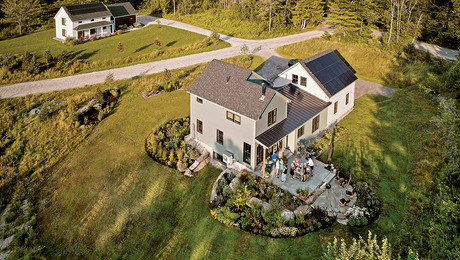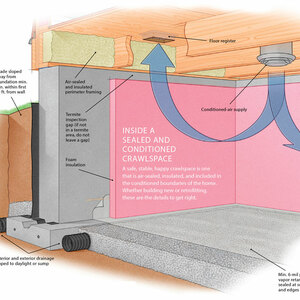A potential client for a custom home mentioned an elevator today. Their adult son, who lives with them, is disabled.
I don’t know how likely this will be, but I want to start getting my information together. I tried a search here but didn’t find too much.
Any rough pointers that anyone has?



















Replies
Jon,
I've done three houses with them so far. You have to find the company you want and they have to give you their framing specs and frame to their specifications. I can tell you the elevators cost 22k to 25k. The slab also has to be lower about 12-15" from what I remember. Framing has to be perfect form the basement and up.
Here's a link that will give you some good information.
http://www.remihomeelevators.com/animations.html
http://www.remihomeelevators.com/pdf/REMI-ISOMETRIC%20VIEW.pdf
Thanks, Joe.
Jon Blakemore RappahannockINC.com Fredericksburg, VA
collected a lot of data from Residential Elevators Inc for a bid that never developed and was impressed with the service they gave me.
Biggest thing was the pan at the bottom of the ele shaft. IIRC had to be at least 6" deep. That meant cutting the slab of the basement, building footers to carry the walls above since the shaft to the above floors cuts floor joists those walls become LB requiring a suitable foundation. One option I hadn't thought of then and may not be feasible is to ramp up to the bottom floor ele door but that's going to take a lot of space for the ramp and the landing at the door.
one wall will be for the hardware and will require some type of blocking (probably variable between suppliers). For REI it was 2x12s run vert with stud on either side making a C. They were to be interrupted by the floor josits and wall bottome plates and continued on above.
Can't remember for sure thinking the doors had to meet a fire rating with seal. Ele shaft must be rocked too.
ele supply was 220v and 110v. different models had power supply at diff locations
I'll see if I can find thier CD that has a stack of .pdfs on it. I've also got a SU model somewhere I did with my interpretations from their drawings.
I've done one and you have good advice here. You can do quite a bit to make it blend in (door style, hardware, etc.) within reason. Getting everything out of the way and reframed within an existing structure was the toughest part. Watch out out for overhead clearance!
Jeff
Jon,
Just completed the first phase of installing my first elevator. We have a very competent sales rep who was of great help with suggestions of how to make the install go smoothly. A couple suggestions. 1. Clarify "disabled", a small residential car may not accommodate a power wheelchair. 2. Use your Yellow pages to find a couple of suppliers. If an architect specs a certain model, there may be a reason, but a knowledgeable sales person is a tremendous asset. Our unit is a LA/LU by National Wheel-O-Vator. It is a small commercial style unit because our client's son is in a large motorized wheelchair. Three stops (levels), lots of concrete in the pit, special framing requirements, but nothing that research, planning and attention to detail doesn't overcome. This unit was in the mid $40k.
HV
I used Residential Elevators for two units in the last big house I built. They are out of Crawfordville, Florida (near Tallahassee) and the service was excellent. They are not cheap but as always you get what you pay for...